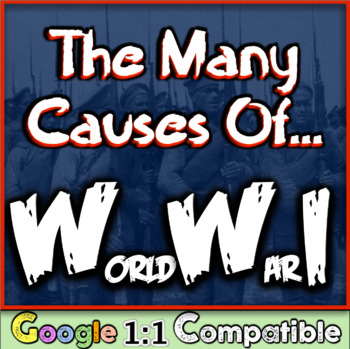World War I Causes | Web of Alliances, Nationalism, Militarism, Imperialism
- Zip
What educators are saying
Learning Objective
Students will evaluate and analyze five causes to the first World War.
Description
World War 1 Causes | Web of Alliances, Nationalism, Militarism, Imperialism, + Assassination of Archduke Ferdinand.
In this World War 1 student activity, students learn about the FIVE major causes, including imperialism, militarism, nationalism, the web of alliances, and the assassination of Archduke Franz Ferdinand in Sarajevo, Bosnia. Students learn about the underlying factors that started World War 1, including the complex web of alliances that sparked "The War to End All Wars" to begin. Students will complete a fun and easy-to-follow graphic organizer where they demonstrate their understanding of the causes! Students understand each concept, realize its significance to World War I, and create a picture that shows the cause in action!
A Google 1:1 compatible version is included in this product! Use in either a traditional setting or in the 1:1 environment!
This activity is included in the much larger World War I Bundle! Scramble for Africa, Causes, Trench Warfare, & Versailles!
----
Be sure to follow the History with Mr E Facebook page, and don't forget to signup for the Social Studies Newsletter to receive information on flash sales, product releases, and classroom tips!
----





